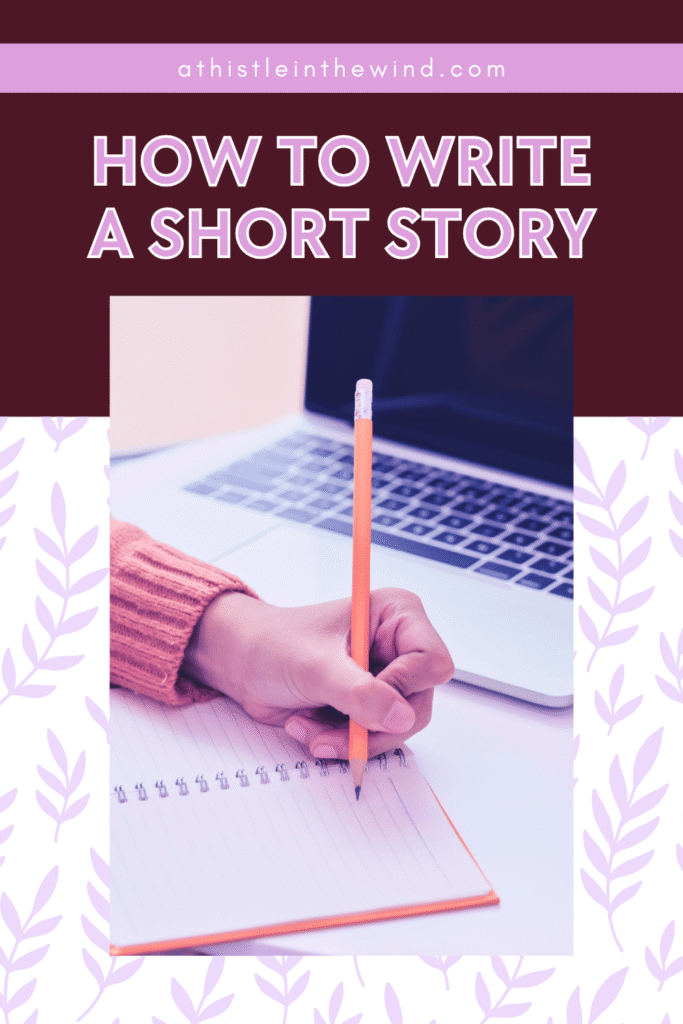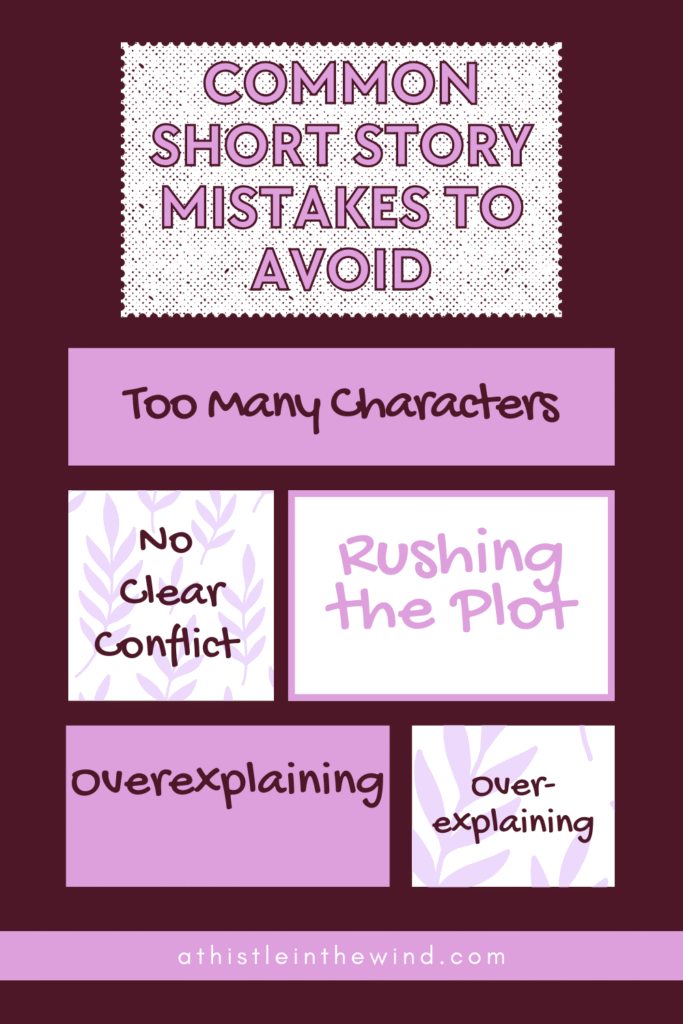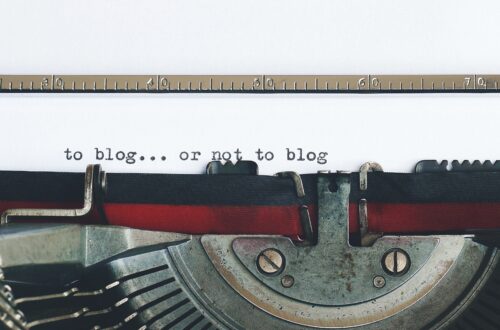How to Write a Short Story (+ Free Worksheet to Get Started!)

Writing a short story sounds simple…until you’re 6,000 words deep with no ending in sight. Trust me, I’ve been there. And even though I have a few publications under my belt, I still struggle to write short stories.
Or used to, before I got super focused on my manuscript and lost any interest in any other form of fiction writing. But recently (and that’s probably because I suck at writing romance anything), I’ve hit a wall with my manuscript. And it’s the summer, and it’s a slow time at the office, so I’ve been thinking about getting back into writing short stories again.
So, in this blog, I’m going to take a closer look at how to write a short story. And this time, both of us are learning together because I think short stories are my weakest medium. But we’ll try to fix that today. Let’s get started.
What is a Short Story?
According to the Encyclopedia Britannica, a short story is “a brief fictional prose narrative that is shorter than a novel and that usually deals with only a few characters.” If only it was that simple. In reality, a short story gives you just enough space to build out a world, introduce a conflict, push your character(s) through it and sometimes, resolve it—all without drawing it out too much.
Think: one focused, vivid moment that becomes a riveting tale. So, how do you write a short story? Let’s look at what a short story includes.
What Does a Short Story Include?
A short story consists of the following elements:
- A main character (or two)
- A central conflict or turning point
- A beginning, middle, and end — even if they’re subtle
- One clear arc with a resolution or shift
- Tightly written scenes with no room for detours
If this sounds familiar to you, this is actually low-key the basis of the essay writing rules we were taught in primary school. Remember the thing with the introduction, climax, rising and falling conflicts and the ending? Yes, that.
The first time I realised that creative writing in school was like Babies 101 to actually writing books, it made my entire week. Because I used to read Enid Blyton back then and she’s a queen when it comes to short stories for kids. I have so many of her books to this day. Seriously, my mother does not understand the attachment.
Anyway, we’re going a bit off topic. The reason we’re taught to write this way, and the reason why so many writers start off with short stories is because it really hones your skillset. It allows you to sharpen stuff like pacing, structure, and clarity. This is especially important when you’re working with tight word counts.
Not all writers start off with writing short stories. There’s no hard and fast rule there. But—and here’s the kicker—the best writers are often really good at short stories.
How Long are Short Stories?
Generally, short stories are usually between 1,000 and 7,500 words, but most literary magazines lean toward that 3,000-word sweet spot.
If you’re wondering how to write a 3000 word short story, that’s where structure becomes essential. But there’s more. We also have sub sections within short stories and those are:
- flash fiction (under 1,000 words), and
- micro fiction (under 500).
I’ll cover those in a future post, but for now, just know they’re even tighter versions of the short story format — same punch, less space.
Examples of Famous Short Stories
Some of the most iconic short stories out there are ones you’ve probably read in school or seen adapted again and again.
Think “The Lottery” by Shirley Jackson, “The Tell-Tale Heart” by Edgar Allan Poe, or—my personal favourite—Arthur Conan Doyle’s Sherlock Holmes stories.
Yes, Sherlock Holmes wasn’t a novel guy at first. Most of his adventures, like “A Scandal in Bohemia” or “The Adventure of the Speckled Band,” are technically short stories. Isn’t that amazing?
How to Write a Short Story (+ Free Worksheet for Beginners)
Now that we know what short stories are, let’s jump right into how to write them. This guide’s going to walk you through how to write a short story for beginners, or even lost manuscript writers like me. These aren’t hard and fast rules that need to be followed to create a good short story, but I’ve found that these steps help me write a coherent story that I can actually submit to magazines. So, let’s go.
If you want to follow along, grab this one-page worksheet I made — it breaks down all the steps and gives you space to sketch your own story.
Step 1: Start with One Strong Image, Memory, or “What If?”
Before you outline your short story, stop and ask yourself: What’s one image, moment, or strange little memory I can’t let go of?
It could be anything. I know, it probably seems so simple, but that’s the seed of your story. Remember short stories don’t need big plots or layered worldbuilding. They just need something concentrated. One spark. It can be visual, emotional, or hypothetical.
Here are some examples:
- A teenager standing in a burned-out living room, smiling,
- A couple waking up with insatiable hunger, or
- A grandmother who used to run a smuggling ring.
Example #1: The Destructors by Graham Greene
A group of boys methodically destroy an old house. That’s the entire premise. But the imagery is what makes this short story interesting. Think post-war London, crumbling walls, the eerie normalcy of destruction—all of it carries weight. You feel the loss, even though no one ever says it.
Example #2: The Second Bakery Attack by Haruki Murakami
A couple gets inexplicably hungry one night and decides to rob a McDonald’s. Yes, really. That’s it. But Haruki Murakami makes it work because the strangeness of the situation, combined with the incredibly human need to hunger, feels real.
If you can’t come up with anything that you feel is good enough (and this happens to me a lot), pull stuff from your own memories. Think of a scene that felt weird, wrong, funny, or intense, and then ask: “what if that escalated?”
Step 2: Choose One Main Character + What They Want
Once you’ve got the core moment or image, ask: Whose story is this? What do they want? What’s in the way?
Use this quick formula: [Name] is a [type of person] who wants [goal] but [obstacle] is in the way.
Make it specific. “A tired girl who wants to go home” is fine. “A psychic who lost his gift” is even better.
Example #1: An Astrologer’s Day by RK Narayan
The astrologer just wants to get through his evening routine but a man from his past threatens to expose who he really is. It’s a simple concept: one character, one quiet goal, and one instant tension that threatens it all. If you haven’t read this short story, I highly recommend it.
Example #2: A Horse and Two Goats by RK Narayan
Muni is a poor villager who just wants to sell his goats and maybe talk to someone. That’s it. The story is built on what happens when his life intersects (badly) with a foreign tourist. And yes, I read this one during my O Levels ten years ago and it stuck with me.
Remember, your character doesn’t need to go on an epic journey. If you can manage to pull that off, that’s amazing. But when you’re writing a short story, it can be as simple as your character just wanting something, and hitting a wall while trying to get it.
Step 3: Build a Mini Arc (Before → Shift → After)
So, once you’ve got your character and your premise, you can now map out the shape of your story. Keep it simple. You don’t need the 12-step hero’s journey here. Ask yourself the following questions:
- What’s their life like before the main event?
- What’s the turning point or change?
- What’s different by the end?
Example #1: Thank You, Ma’am by Langston Hughes
Roger tries to steal a woman’s purse. She catches him, drags him home, feeds him, and lets him go. And he’s different by the end, not because she lectures him, but because of how she treats him.
Example #2: Tony Takitani by Haruki Murakami
Tony lives alone, disconnected from people. He then meets someone, loves, marries, and then loses her. It’s quiet but devastating because at the beginning, Tony’s isolated and by the end, even though he’s alone again, it’s not just isolation. It’s a deeper kind of emptiness.
Murakami, in particular, does this pretty well. His stories are, at the heart of them, basic and simple ideas but the way he writes is what changes everything. So, remember, the “shift” in your story doesn’t need to be loud and clear. It just needs to mean something.
Step 4: Write the Scene That Changes Everything
Here’s the thing: don’t write in order. This is something I do in my manuscript as well.
Start with the moment where everything changes, the pivotal moment that turns your story around.
Example #1: The Open Window by Saki
The punchline lands in the middle of the story. Everything after is just emotional fallout. But the moment when he realizes what’s happening is the engine of the whole thing.
Example #2: Stone Mattress by Margaret Atwood
The entire story builds toward one brutal scene in an ice corridor. That’s where everything changes. And Atwood gives it to you without apology.
Writing this scene helps you set the tone of your short story. Also, it really helps me come up with ideas on the before and after of this particular scene.
Step 5: Add the Beginning and Ending
Following the last point, once your shift scene is done, you can now build the start and the end.
For the beginning:
- Show your character in their “before” state: bored, bitter, hopeful, whatever you want.
- Let the reader feel what’s normal before you break it.
And in the ending:
- Don’t over-explain. Just show what’s changed.
- A decision. A silence. A look. A single sentence can close the loop.
Example #1: Sleep by Haruki Murakami
The story opens with insomnia and ends in quiet, existential dread. It’s simple, layered and the emotional spiral is complete.
Example #2: The Metamorphosis by Franz Kafka
Gregor wakes up as a giant insect. Seriously, that’s literally the first line. The beginning shows us confusion and fear, but also his weird instinct to go to work anyway. By the end, he dies alone in his room, unloved and unwanted.
Your short story doesn’t need closure. If it feels right, you don’t need to tie it all up neatly. But the start and end should talk to each other. The ending should feel like it couldn’t have come from anywhere else.
Real endings feel like doors closing, not gift wrapping.
Step 6: Edit Using These 3 Questions
Once you’re done with your short story, you’re going to have to edit it. This is perfectly normal. No writer submits their first draft (and if you do, I have questions). Most writers hate editing because it’s just so hard.
But here’s how I force myself to do it. Here are three questions you should ask while editing:
- What’s confusing? Cut or rewrite anything that takes too long to make sense.
- What’s boring? Be ruthless. If a sentence doesn’t move the story forward, kill it.
- What feels honest? Keep it. Always. Even if it’s weird or raw or hard to explain.
Bonus Tip: Keep It Short and Sharp
Short stories are short for a reason. They don’t sprawl; they cut. It’s important to remember that most literary magazines want pieces under 3,000 words. Some want less than 1,000. So don’t waste space. If it doesn’t serve the arc, the tension, or the emotion, cut it.
Common Short Story Mistakes to Avoid
If you’re a beginner (or even an expert because lord knows I’ve done this too), and are just learning how to write a short story, here are some mistakes you should watch out for.
1. Too Many Characters
One or two is enough. This isn’t your novel. If a character doesn’t impact the main arc or emotion of the story, cut them out. No side quests. No filler friends. It takes a really skilled writer to pull off multiple characters and side quests in one short story. Think George Martin, for example.
2. No Clear Conflict
Every short story needs tension. It doesn’t have to be a full-blown fight, but it needs to be something that pushes your character off balance. If nothing happens in your short story, nothing matters.
3. Rushing the Plot
A common mistake most writers make is to rush everything. This partly comes from the restricted word count here. But this doesn’t mean that you have to skip the emotional beats to hit the ending. Even in flash fiction, readers need to feel the shift. Pace doesn’t mean sprinting; it means intention.
4. Overexplaining
Trust your reader. You don’t need to spoon-feed the message or explain stuff to them. The best short stories leave space for the reader to feel it without being told.
5. Weak or Missing Endings
Again, this is a part of rushing the plot. If you don’t pace yourself properly, you’re going to mess up the ending. And for short stories, specifically, you need an ending that lands. It can be anything that shows something change. Don’t just trail off and hope for the best.

And This is How You Write A Short Story
Seriously, this is it. Now, I know. Reading this stuff might make it sound simple. It’s actually not, but I find that writing this stuff out made it really simple and easy-to-follow for me. I’ve actually written a short story during the course of writing this blog.
I’ll let you guys know how it worked out.
For now, here are my final thoughts. The most important thing to remember when writing a short story is to keep it simple. Short stories aren’t about doing everything, they’re about doing one thing well. One moment. One shift. One character who comes out slightly different by the end.
Don’t overthink it. You don’t need to do something super complicated. Keep it simple and write. You’ll be surprised where it takes you.
So, what do you think? Feel free to share your thoughts in the comments below!
Want this blog in a simpler, printable format? Download the free short story worksheet here — it’s one page, beginner-friendly, and gives you space to start your own story right away.

3 Comments
Newberg69482@gmail.com
Hello. magnificent job. I did not anticipate this. This is a remarkable story. Thanks!
Albert Rohrer
Excellent. Thank you.
Sura
Thank you for visiting my blog! Really appreciate it:)